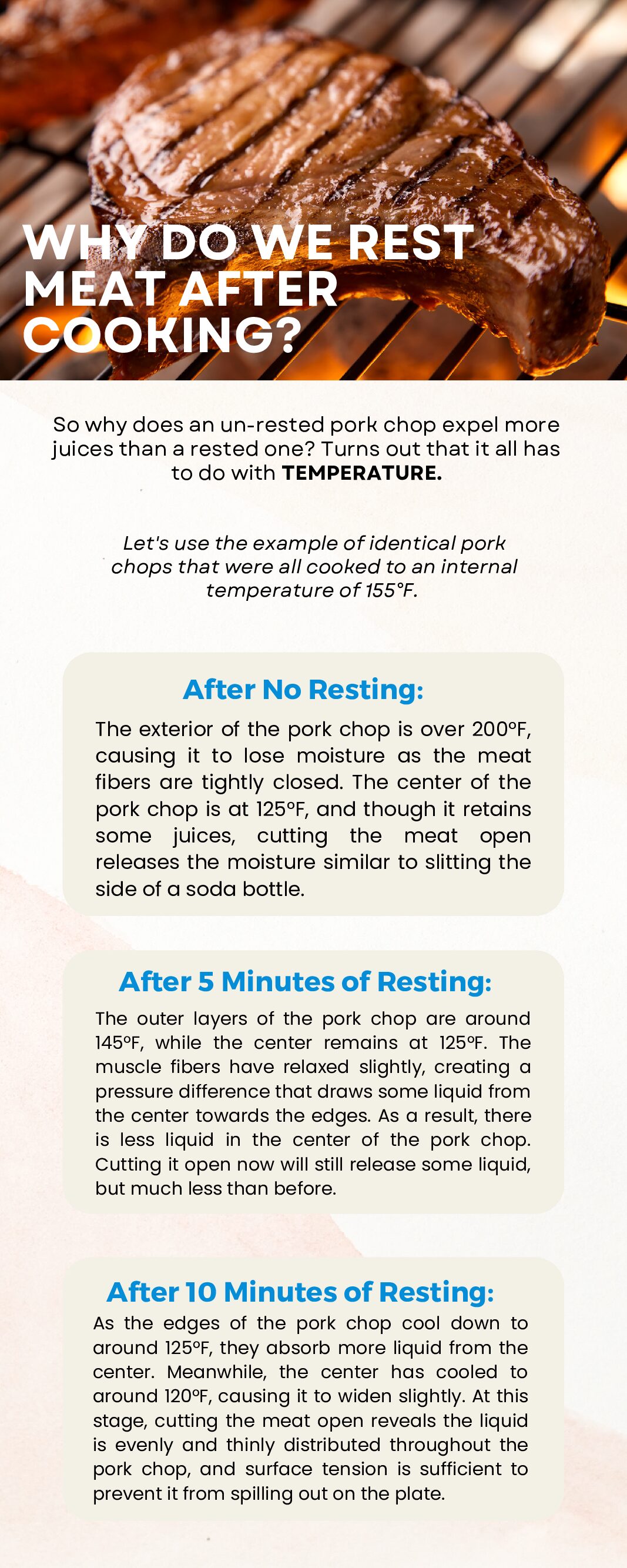Have you heard that you should rest your meat for 10 minutes after you finish cooking it?
Well, there’s a great reason for it, and here’s why you should budget for that resting time next time you cook up a pork chop.
WHY DO WE REST MEAT AFTER COOKING?
So why does an un-rested pork chop expel more juices than a rested one? Turns out that it all has to do with TEMPERATURE.
Let’s use the example of identical pork chops that were all cooked to an internal temperature of 155°F.
After No Resting:
The exterior of the pork chop is over 200°F, causing it to lose moisture as the meat fibers are tightly closed. The center of the pork chop is at 125°F, and though it retains some juices, cutting the meat open releases the moisture similar to slitting the side of a soda bottle.
After 5 Minutes of Resting:
The outer layers of the pork chop are around 145°F, while the center remains at 125°F. The muscle fibers have relaxed slightly, creating a pressure difference that draws some liquid from the center towards the edges. As a result, there is less liquid in the center of the pork chop. Cutting it open now will still release some liquid, but much less than before.
After 10 Minutes of Resting:
As the edges of the pork chop cool down to around 125°F, they absorb more liquid from the center. Meanwhile, the center has cooled to around 120°F, causing it to widen slightly. At this stage, cutting the meat open reveals the liquid is evenly and thinly distributed throughout the pork chop, and surface tension is sufficient to prevent it from spilling out on the plate.
